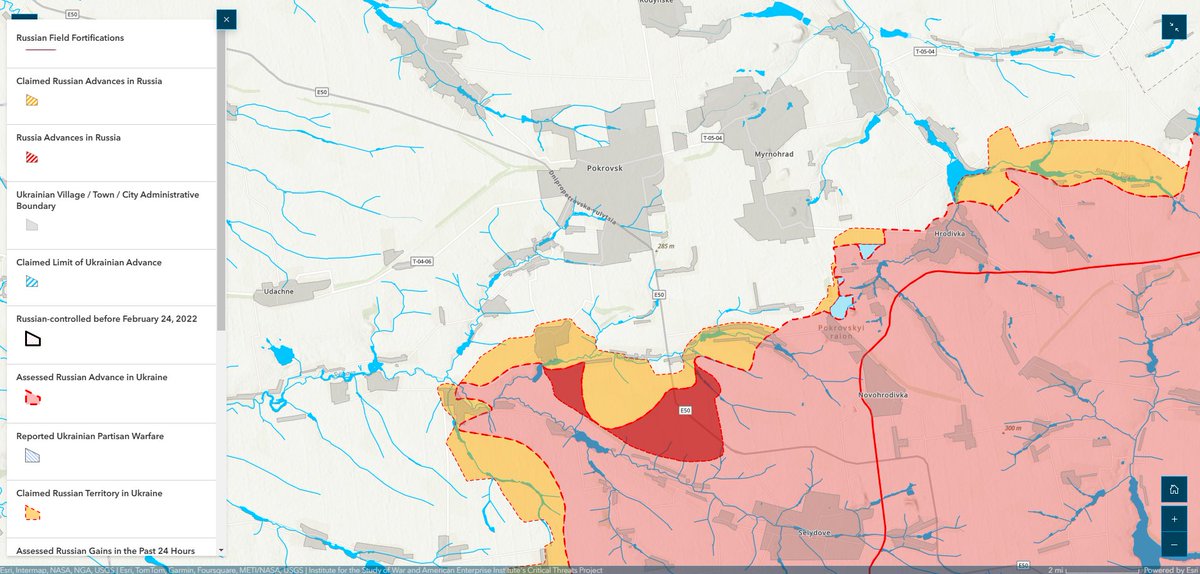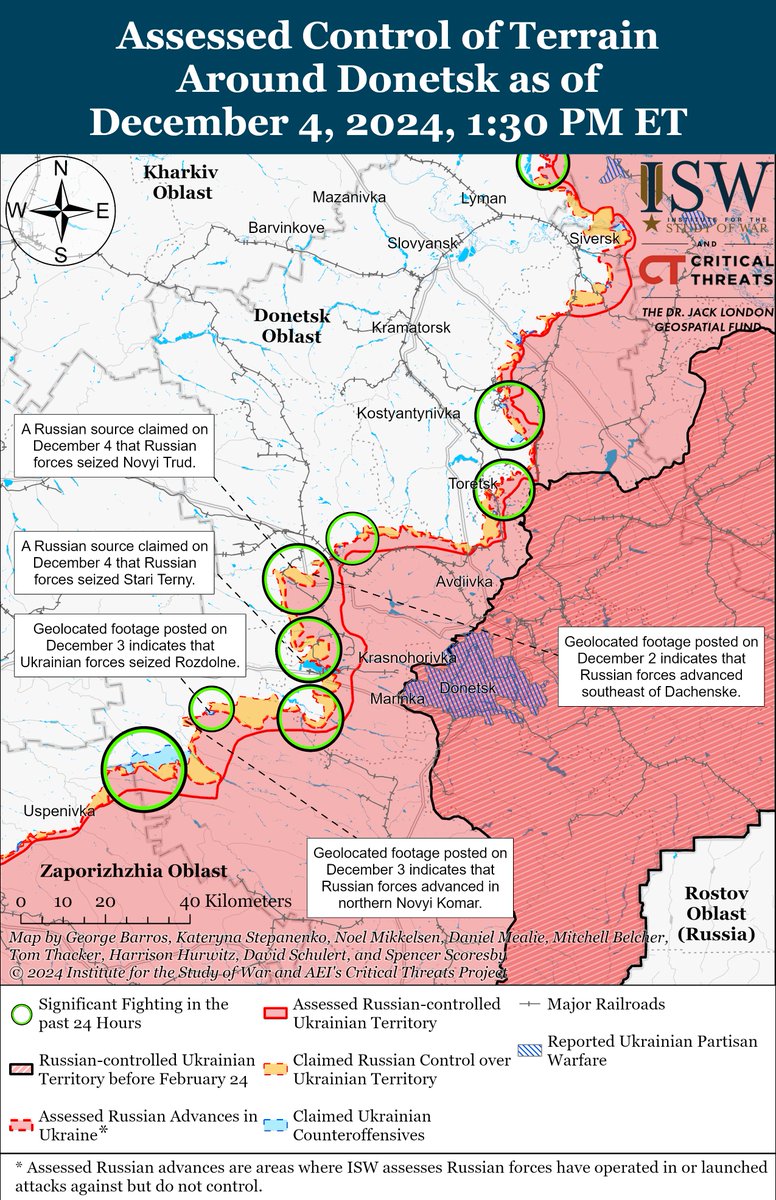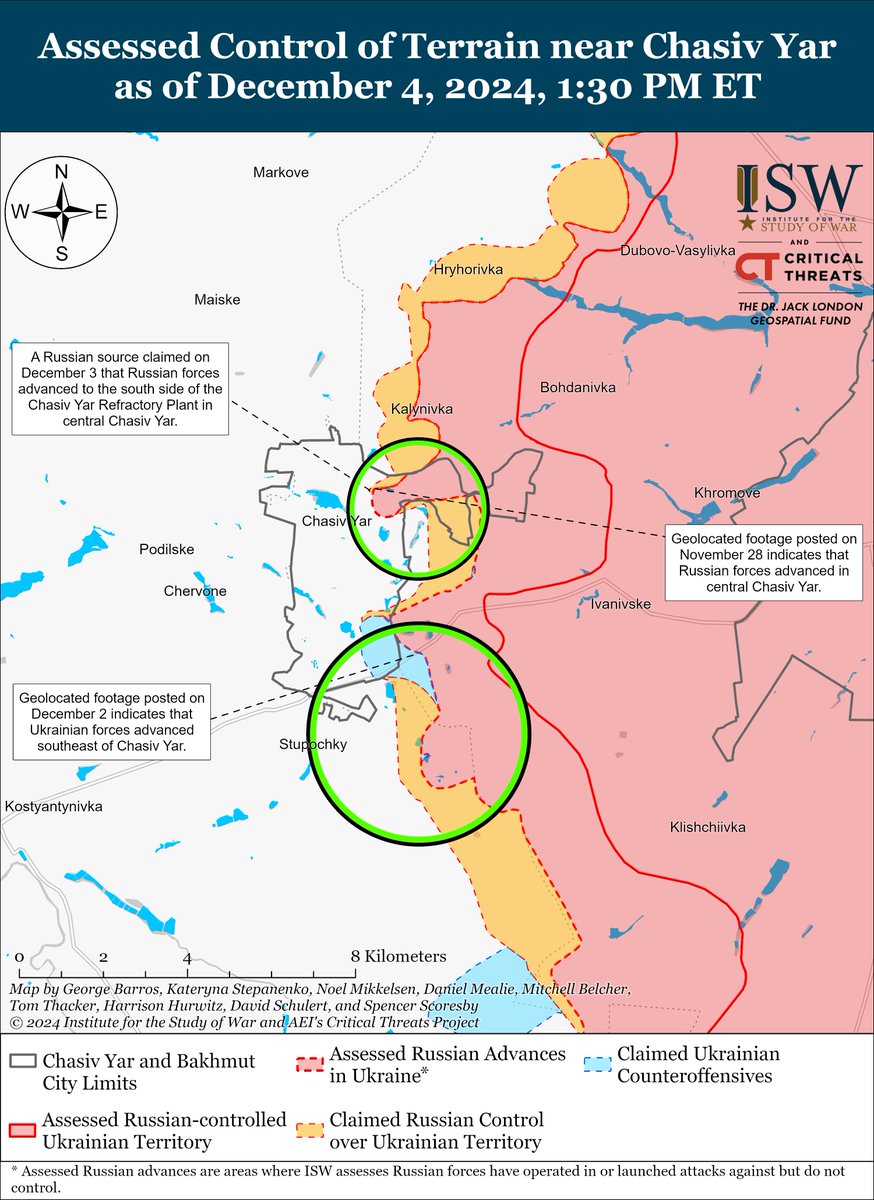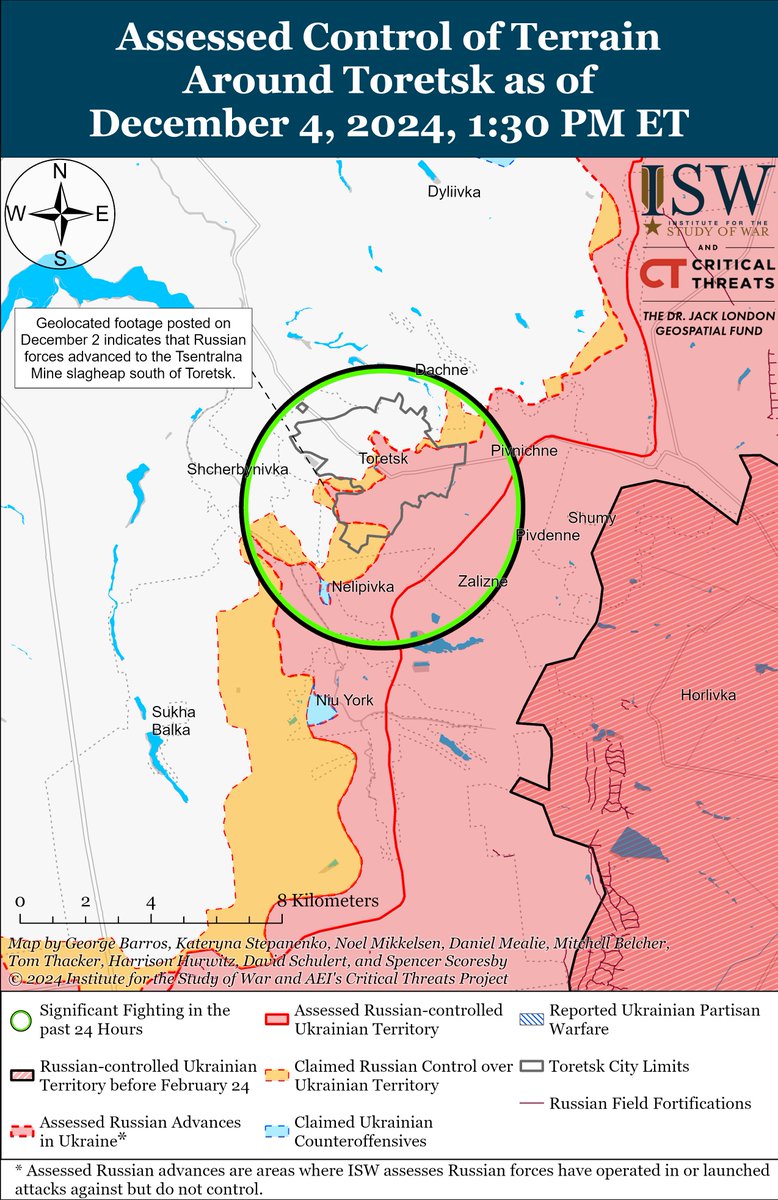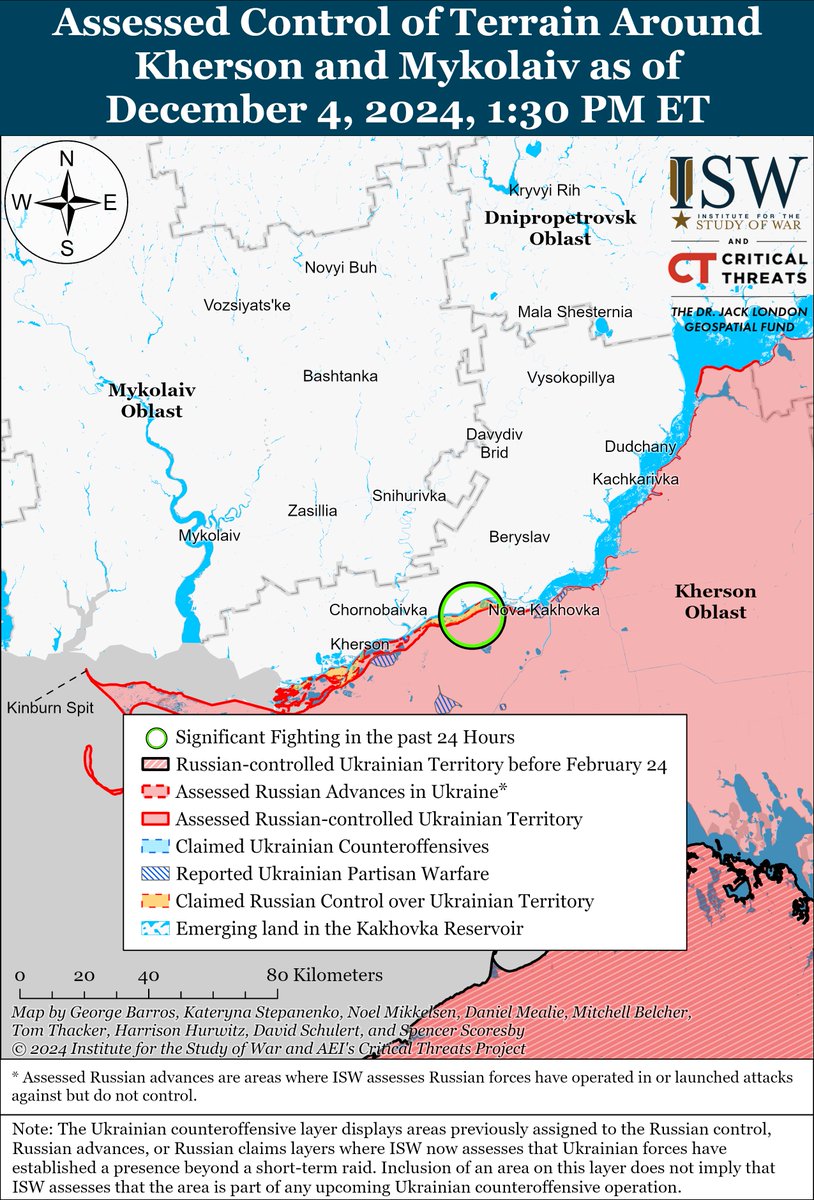Eastern #Ukraine Update: #Donetsk Oblast
Russian forces continued ground attacks around #Bakhmut, in the Donetsk City-#Avdiivka area, and in the western part of Donetsk Oblast.🧵(1/9) isw.pub/UkrWar021723
Russian forces continued ground attacks around #Bakhmut, in the Donetsk City-#Avdiivka area, and in the western part of Donetsk Oblast.🧵(1/9) isw.pub/UkrWar021723

2/ #Bakhmut sector:
The Ukrainian General Staff reported that Ukrainian forces repelled Russian assaults on #Bakhmut itself and near Fedorivka (20km north of Bakhmut), Rozdolivka (19km NE of Bakhmut), Paraskoviivka (9km north of Bakhmut), and Ivanivske (5km west of Bakhmut).
The Ukrainian General Staff reported that Ukrainian forces repelled Russian assaults on #Bakhmut itself and near Fedorivka (20km north of Bakhmut), Rozdolivka (19km NE of Bakhmut), Paraskoviivka (9km north of Bakhmut), and Ivanivske (5km west of Bakhmut).

3/ Geolocated footage published on February 17 of a Ukrainian armored fighting vehicle firing at Russian positions in northeastern #Bakhmut shows Russian forces have made minor advances toward Bakhmut’s city center. 

4/ Russian milbloggers claimed that Wagner assault detachments advanced into Paraskoviivka from three sides on the night of February 16 and are engaging in heavy fighting around the settlement. 

5/ Russian milbloggers offered conflicting claims on Wagner Group positions near #Ivanivske: one milblogger claimed that Wagner forces advanced to the outskirts of Ivanivske, while another milblogger claimed that Ukrainian forces pushed Wagner forces away from the highway. 

6/ #Avdiivka-Donetsk City sector
The Ukrainian General Staff reported that Ukrainian forces repelled Russian assaults along the outskirts of #Donetsk City near Sieverne and Vodyane (on the northwest outskirts) and Marinka and Novomykhailivka (on the southwestern outskirts).

The Ukrainian General Staff reported that Ukrainian forces repelled Russian assaults along the outskirts of #Donetsk City near Sieverne and Vodyane (on the northwest outskirts) and Marinka and Novomykhailivka (on the southwestern outskirts).


7/ A Russian milblogger claimed that Russian forces conducted ground attacks on Vodyane, Novomykhailivka, and Pervomaiske (on the northwestern outskirts of #Donetsk city). Another Russian milblogger claimed that Russian forces expanded their control within Marinka.
8/ Western #Donetsk Oblast:
The Ukrainian General Staff reported that Ukrainian forces repelled Russian assaults near #Vuhledar (30km southwest of Donetsk City).
The Ukrainian General Staff reported that Ukrainian forces repelled Russian assaults near #Vuhledar (30km southwest of Donetsk City).

9/ A Russian milblogger claimed that Russian forces conducted ground attacks near Novosilka (65km southwest of #Donetsk City) and Prechystivka (35km southwest of Donetsk City) and attempted to advance south and east of #Vuhledar. isw.pub/UkrWar021723
• • •
Missing some Tweet in this thread? You can try to
force a refresh





